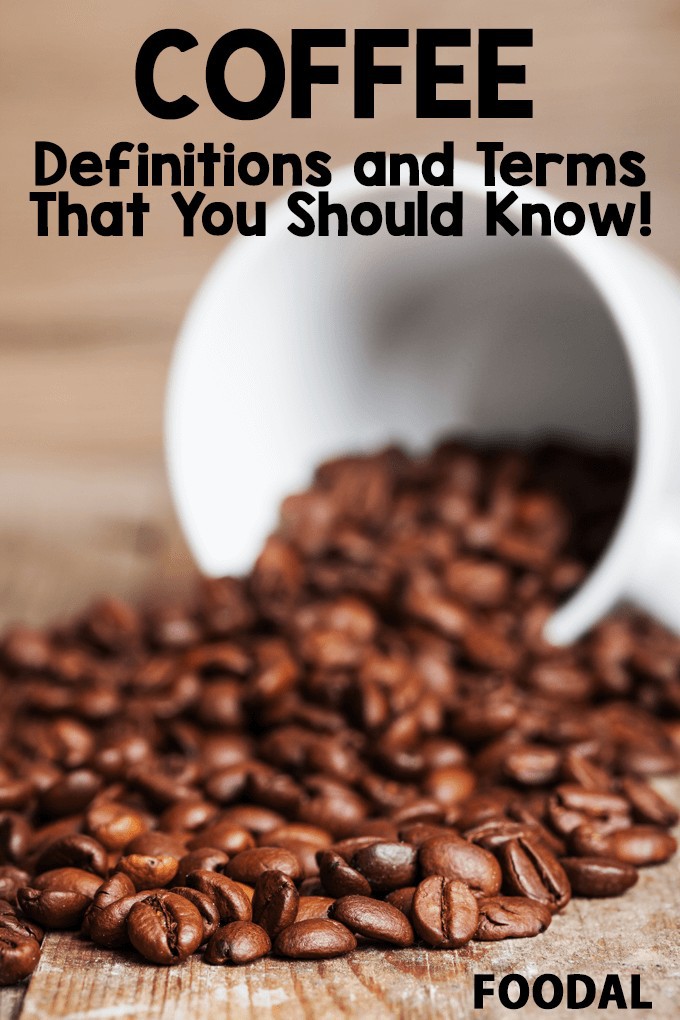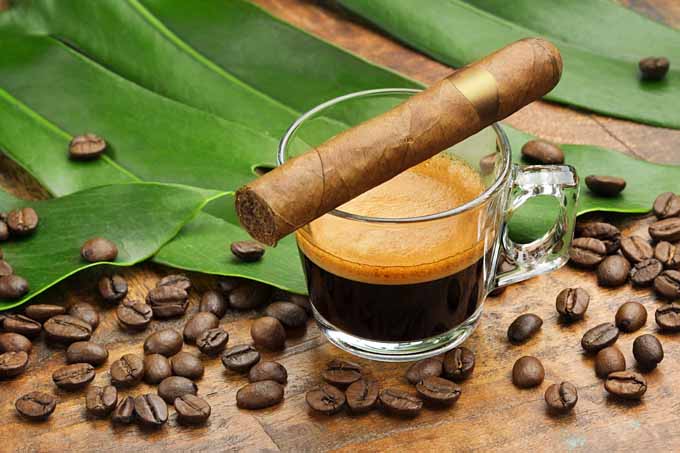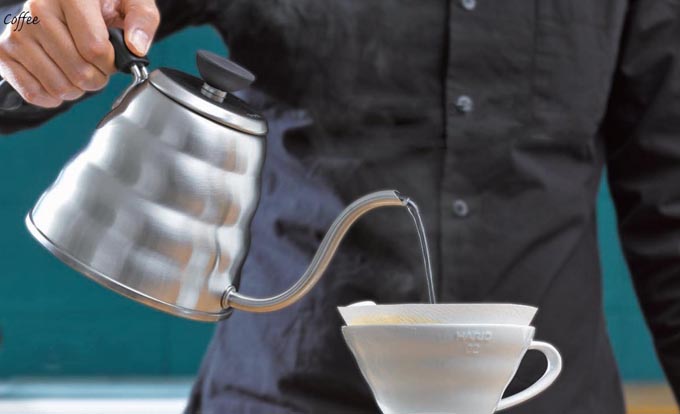Coffee shouldn’t be rocket science, but sometimes we feel inundated with all the different slang and vocabulary used in serious cafes.
Check out our list of some of the more esoteric coffee-related terms and definitions so that you can keep up with your hipster friends – and perhaps show them up!

Affogato
Also called Affogato al Café, meaning drowned in coffee, this delicious treat combines the bold, rich taste of espresso with the sweet taste of ice cream.
The milkshake-like drink can easily be made at home to suit your own tastes. Using an espresso machine, simply brew a normal shot, then pour over the ice cream of your choice.
Vanilla ice cream is preferred since the flavor combination is delightful.
Click here for a more detailed recipe.
Americano
Simply an espresso shot that has been diluted with hot water, an Americano coffee drink is named after the American version of espresso.
It tastes different than regular drip coffee, but it does have about the same strength, depending on how much water is added.
There are different opinions on when the term originated, but one theory is that it came from the period of World War II, when American soldiers in Europe requested coffee similar to what they were used to at home.
Barista
A barista is a person who concocts your fancy drinks at a coffee bar or cafe. In Italy, baristas serve many different kinds of drinks. But in America, we reserve the term only for those who prepare coffee drinks.
A coffee sommelier is a barista who has studied extensively to learn the history of coffee. Sommeliers learn roasting and brewing methods, types of coffee beans, and even how to make latte art.
This training can take years to perfect.
Blooming
All coffee beans degas volatile compounds, and when roasted and ground, this degassing increases. When hot water comes into contact with freshly ground coffee, the rate of degassing increases even further, and the effect can be seen as the grounds expand and “puff up.”
These rapidly-escaping volatile compounds work against an optimal coffee brew by forcing water away from the coffee grinds.
Coffee fans who use pour over coffee methods such as the Chemex or Hario systems often pre-bloom their coffee, in order to let some of the gasses dissipate prior to brewing.
See our article, “What is Coffee Bloom?,” for more details.
Cappuccino
Usually a six-ounce drink, a cappuccino is a mixture of 1/3 espresso, 1/3 steamed milk, and 1/3 milk foam. Everything that goes into making a perfect cappuccino is important, from the espresso used to the temperature of each ingredient.
Often sprinkled with cinnamon or chocolate, cappuccino can be made easily at home with your favorite espresso machine.
Though cappuccinos have only recently gained popularity in the US, they have been around for over 100 years.
Cortado
A café cortado is an espresso drink into which milk is “cut,” giving it its moniker. The word cortado literally translates into the word “cut” in English.
To make a cortado, simply cut two ounces of steamed milk into your two-ounce portion of espresso. This simple drink is quickly gaining popularity in America.
Cold Brew
Not to be confused with iced coffee, which can be made from either cold or hot brewed java, this drink is made by using cold or room temperature water to extract the goodness out of the grinds.
The extraction period can take hours or even days, depending on the method used, which can include everything from a purpose built apparatus to a common French press.
Crema
This term refers to the caramel-colored foamy air bubbles that appear on top of a freshly made espresso as a result of the emulsification of the oils in the coffee beans.
This indicates how well the espresso was made, and every shot should have it. A lighter color can indicate that the water temperature was too low or that the extraction time was too short. If the crema is too dark, it can indicate that extraction time was too long or that too much coffee was used.
This term can also be used to refer to a Swiss espresso drink known as Café Crema, which is made with thickened sweet milk.
Cubano
A very simple espresso-based drink from Cuba, made with blended sugar and whipped to create a crema-like froth called espumita.

It’s very popular in south Florida, due to the Cuban diaspora community there.
Direct/Fair Trade
These similar terms refer to coffee that is purchased directly from the farmer who grew the plants from whence the beans came.
This helps farmers to earn a fair wage for their product, which in turns helps to improve their way of life.
Learn more about fair trade practices.
Espresso
More popular in Europe than in the States (but quickly gaining popularity), espresso involves a method of preparing finely ground beans by forcing high-pressure water through them.
Though many people believe that espresso refers to a roasting method, espresso can come from different roasts and only refers to the way that the drink is prepared.
Referred to as a shot, the drink is made in one-ounce portions. Traditionally, it is served in small demitasse cups.
Learn more about making espresso at home now.
Espresso Machine
The first espresso machine was patented in 1884 by Angelo Moriondo of Turin, Italy and it has undergone many changes since then.
There are actually multiple types of machines in use today, which are based on their drive mechanism. There are steam-driven machines, which is what the first machines produced were, in addition to pump driven, piston driven, and air pump driven.
There are other things that go into choosing the espresso machine that may be perfect for you if you want the option of making espresso at home, which is why we created buying guides to help you choose.
Iced Coffee
Usually made with espresso to keep the rich coffee flavor even after it has been iced, this drink combines a very strong brew with approximately double the amount of chilled milk, and then it is iced.
It is often served with a flavored syrup on top, such as chocolate.
To make the perfect iced coffee at home, add milk to espresso, then allow the mixture to chill overnight. This helps to keep the ice from melting too quickly, which can dilute the drink.
Latte
This very popular drink, which can also be made at home, is usually a shot of espresso with steamed milk and topped with milk foam – though serving it with a double shot is not uncommon.
The difference between a latte and a cappuccino lies in the ratio of ingredients used. Though they are both made with espresso, steamed milk, and foam, a cappuccino has equal parts whereas a latte has a higher ratio of steamed milk.
Latte literally translates as “milk” from Italian, so if you order a latte in Italy, you will simply receive a glass of milk.
Latte Art
Though the creative art form of decorating the steamed milk on top of a cappuccino has probably been around for decades, it really took off in the 1980s.
Originally, only the most accomplished baristas were able to produce even the simplest of pieces, as it is a skill that takes a lot of practice.
To make a great work of art, the shot of espresso and the steamed milk have to be perfectly made.
The methods of latte art consist of free pour, which involves the artist actually decorating the espresso via the way the milk is poured, and etching, which uses a thin tool to sketch the art into the steamed milk.
There are competitions held all across the globe for latte artists, and even a World Latte Art Championship held annually for the best of the best barista artists to compete.
Macchiato
Though you may have seen it with all of the bells and whistles such as caramel or chocolate toppings, a macchiato in its basic form is a shot of espresso with an added layer of foamed milk on top, making it a two- to three-ounce drink in total.

This drink is perfect for someone who is unable to tolerate the boldness of espresso, but finds a cappuccino is not strong enough. Click here to find out more.
Mocha
Also known as a mochaccino, this is very similar to a café latte. The difference is that a café mocha also has added chocolate, which can come in the form of syrup or a cocoa powder.
It is espresso with milk foam on top, to which chocolate is added. Another way that mochas are often served is known as a White Mocha, which uses white chocolate instead of milk or dark chocolate.
Red Eye
If you’re really desperate for some caffeine, the red eye combines espresso with a cup of regular coffee.
Also known as a Hammerhead or a Shot in the Dark, there are many variations of this drink, such as using two shots of espresso, or even three.
This drink got its name from the large amount of caffeine it contains. You can read more about it here.
The Parting (Coffee) Shot
What about you? Do you have any coffee related terms that we are missing from our list? Let us know in the comments below and we’ll be sure to include them!
Photo credits: Shutterstock, © Ask the Experts, LLC. ALL RIGHTS RESERVED. See our TOS for more details.
About Mike Quinn
Mike Quinn spent 20 years in the US Army and traveled extensively all over the world. As part of his military service, Mike sampled coffee and tea from all virtually every geographic region, from the beans from the plantation of an El Salvadorian Army Colonel to "Chi" in Iraq to Turkish Coffee in the Turkish Embassy in Kabul, Afghanistan. He spent nearly a decade in the Republic of Korea where he was exposed to all forms of traditional teas. Mike formerly owned and operated Cup And Brew, an online espresso and coffee equipment retail operation.




Is there a difference between a latte and a cortado?
Great question, T. Though both drinks are made with coffee and milk, the cortado is made with equal parts espresso and steamed milk and is usually served in a small cup, whereas the latte is made with both steamed and frothed milk, and contains a higher ratio of milk to espresso overall.
Very good….
Great stuff, I love coffee. I add milk and a little chocolate, tastes great.